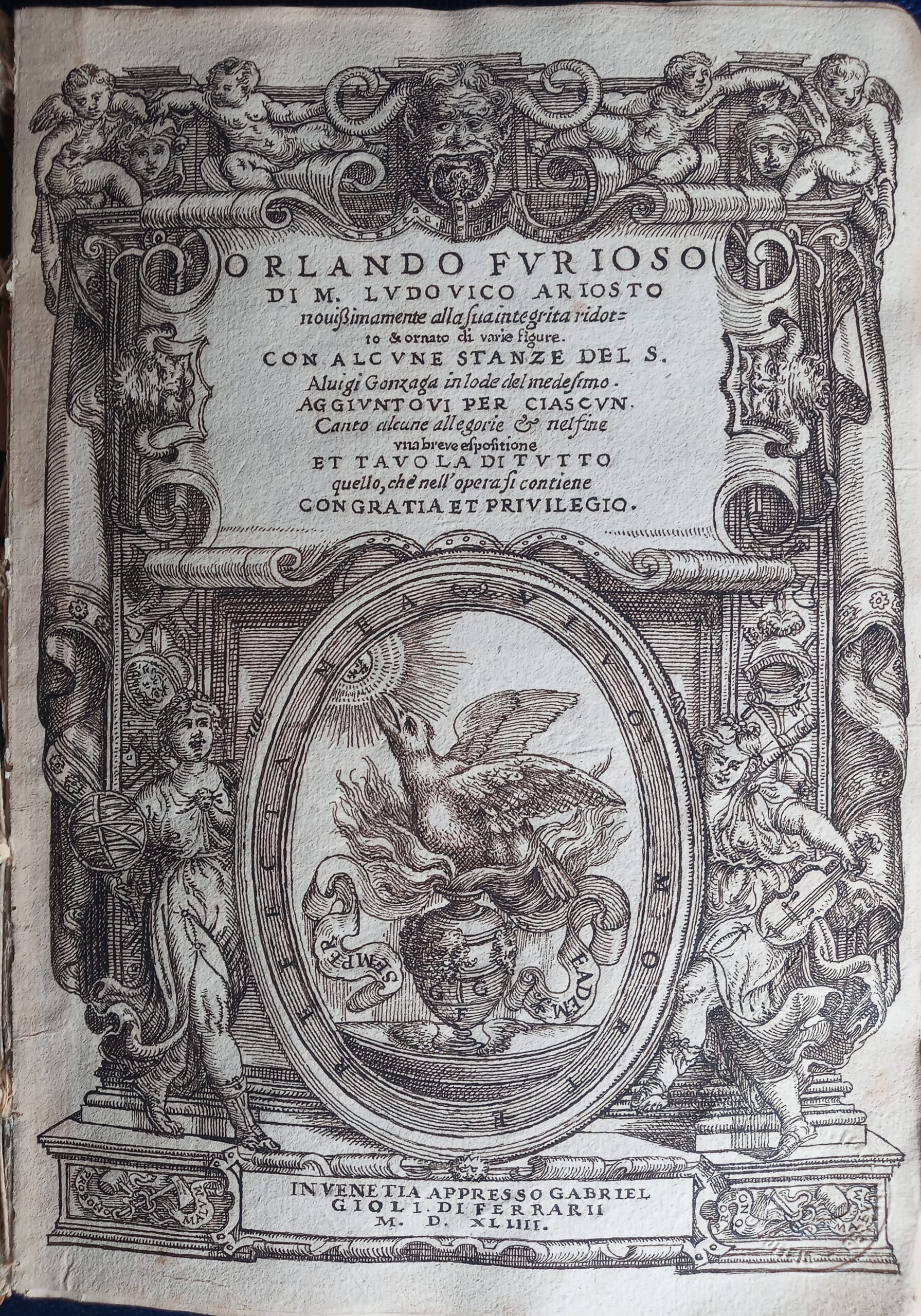The knightly poem “Orlando Furioso” is recognised as the first modern work intended for printing, written by Ludovico Ariosto. It conceptually continues the narration of Matteo Maria Boiardo’s “Orlando Innamorato” published in 1483 and dedicated to Ercole I d’Este. This work is also dedicated to a member of the d’Este family, in fact, in the third octave the rhymes point to Cardinal Ippolito for whom Ariosto had been in service since 1503.
“Piacciavi, generosa Erculea prole,
ornamento e splendor del secol nostro,
Ippolito, aggradir questo che vuole
e darvi sol può l’umil servo vostro.
Quel ch’io vi debbo, posso di parole
pagare in parte e d’opera d’inchiostro;
né che poco io vi dia da imputar sono,
che quanto io posso dar, tutto vi dono.”
The storyline of the poem is rich in intertwining events, involving the reader in a continuous alternation of stories and characters, and three main themes can be identified in the narrative. The first is linked to the war between Charlemagne’s christian army and the Moors that from Africa reach the gates of Paris, the second is linked to Orlando’s adventures and madness. While the last narrative core deals with the encomiastic theme addressed to the Este court and developed through the love between Bradamante and Ruggiero recognised as the progenitors of the House of Este. The proem of the work already clearly sets out the topics that will be addressed in the course of the narrative:
“Le donne, i cavallier, l’arme, gli amori,
le cortesie, l’audaci imprese io canto,
che furo al tempo che passaro i Mori
d’Africa il mare, e in Francia nocquer tanto,
seguendo l’ire e i giovenil furori
d’Agramante lor re, che si diè vanto
di vendicar la morte di Troiano
sopra re Carlo imperator romano”
Ariosto began drafting the work early, perhaps already around the beginning of the 16th century. As proof of this, we know from a letter from Isabella d’Este dated 1507 that the author went to her at the court of Mantua to read the first verses of his composition to her.
The poem written in octaves was reworked for years and sixteen years passed before the author arrived at the final version. The first edition came out on 22 April 1516 from the printing house of Giovanni Mazzocco da Bondeno. In the last and final edition, published in October 1532, Ariosto followed Pietro Bembo’s linguistic indications, changing the Paduan vulgar language, with dialectal forms and Latinisms, into literary Florentine. Moreover, in the last version, several episodes were added, thus taking the poem from forty to forty-six canti.
The first editions of the poem and an autographed but partial manuscript are today preserved in the Ariostea Library located in Palazzo Paradiso in Ferrara. The work was already a great success among its contemporaries, making it not only a masterpiece of the Renaissance but also of Italian literature.







